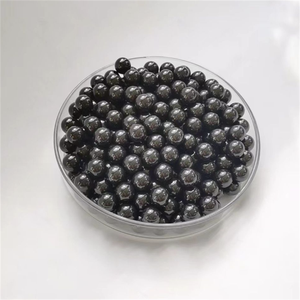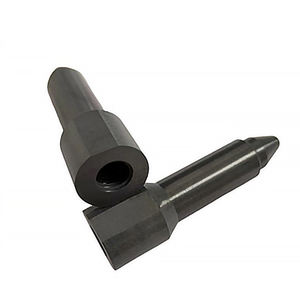Discover Premium Ceramic Products | Durability & Elegance United | Advanced Ceramics
PRODUCT PARAMETERS
Description
Overview of Silicon Carbide Ceramics
Silicon Carbide (SiC) ceramics are renowned for their outstanding mechanical properties, including high hardness, strength at elevated temperatures, and excellent thermal shock resistance. These materials are pivotal in cutting-edge industrial applications, from abrasives to aerospace components, due to their unique combination of properties.
Features of Silicon Carbide Ceramics
High Hardness: Exceptional wear resistance.
Thermal Shock Resistance: Can withstand rapid temperature changes.
Chemical Stability: Resistant to most chemicals.
High Thermal Conductivity: Efficient heat dissipation.
Low Density: Lightweight for its strength.
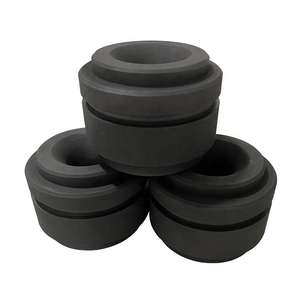
(High Quality Refractory Silicon Carbide SIC Ceramic Plate)
Specification of High Quality Refractory Silicon Carbide SIC Ceramic Plate
This item is made from high-purity silicon carbide (SiC). The product is sintered under extreme warmth. It offers phenomenal sturdiness in high-temperature settings. The optimum operating temperature level gets to 1650 ° C. It stands up to thermal shock efficiently. Rapid temperature level changes trigger marginal damages. Home plate maintains structural honesty under repeated heating cycles. Its density ranges in between 3.0-3.2 g/cm SIX. This ensures low porosity. The reduced porosity protects against gas infiltration. Chemical stability is one more essential attribute. The plate resists acids. It resists alkalis. It performs well in destructive atmospheres. Mechanical stamina continues to be high. The flexural stamina surpasses 350 MPa. The hardness determines 9.5 on the Mohs range. Wear resistance transcends to typical ceramics. Surface finish choices include brightened and as-fired structures. Standard density varies from 5mm to 50mm. Custom dimensions are available. Length and size measurements adjust to commercial requirements. Thermal conductivity is more than alumina porcelains. Heat distributes evenly across the surface. Energy effectiveness improves in heating system applications. Electrical conductivity enables use in electric heater. The product fits kiln furnishings. It helps warmth therapy trays. It serves in metallurgical processes. Semiconductor manufacturing devices makes use of these plates. They deal with molten metals without degradation. Installment methods include mechanical fastening. Glue bonding is feasible. Maintenance needs are very little. No special finishings are needed. Long life span reduces substitute costs. Evaluating meets international criteria. Quality checks consist of X-ray imperfection detection. Set consistency is ensured. Custom forms are produced utilizing CNC machining. Resistances stay within ± 0.5% of defined dimensions. Product packaging utilizes shock-absorbent materials. Each plate is independently covered. Technical support helps with application-specific inquiries.
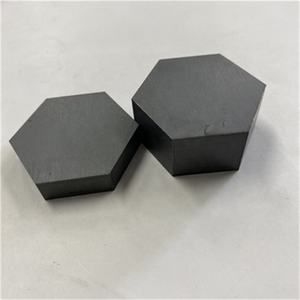
(High Quality Refractory Silicon Carbide SIC Ceramic Plate)
Applications of High Quality Refractory Silicon Carbide SIC Ceramic Plate
High-grade refractory silicon carbide (SIC) ceramic plates serve crucial roles across markets because of their outstanding resilience and warm resistance. These plates hold up against extreme temperatures, commonly surpassing 1600 ° C, making them optimal for high-heat environments. They withstand thermal shock, meaning sudden temperature adjustments do not cause splitting. Their chemical security permits use in corrosive settings without deterioration.
In metallurgy, SIC plates line heaters and kilns. They protect tools from liquified metal and slag. Their reduced thermal growth makes sure structures stay undamaged under duplicated heating cycles. This decreases downtime in steel handling plants.
The aerospace industry utilizes SIC plates in components subjected to extreme warmth during re-entry or propulsion. Rocket nozzles and heat shields take advantage of their capacity to keep toughness at heats. This enhances safety and security and durability in aerospace systems.
Energy production relies on SIC plates for elements in coal-fired plants and nuclear reactors. They shield activators and manage contaminated materials securely. Photovoltaic panel production uses them as crucibles for melting silicon. Their non-reactive nature guarantees pure silicon production.
Automotive industries apply SIC plates in brake systems and engine parts. They sustain rubbing and warm better than typical products. Electric automobiles utilize them in battery thermal management to prevent overheating. This improves efficiency and safety.
Chemical handling plants use SIC plates in activators and piping. They withstand acids and antacid, minimizing contamination dangers. Their solidity minimizes wear from abrasive products. This reduces upkeep prices gradually.
Electronics manufacturing uses SIC plates as substrates for high-power devices. They dissipate warmth effectively, preventing part failure. Semiconductor manufacturing utilizes them in wafer handling for accuracy and security.
The flexibility of SIC ceramic plates originates from their distinct properties. They integrate mechanical stamina with thermal and chemical resilience. Industries value them for improving efficiency, safety, and cost-effectiveness. Their adoption proceeds expanding as technology demands higher-performance materials.
Company Introduction
Advanced Ceramics founded on October 17, 2014, is a high-tech enterprise committed to the research and development, production, processing, sales and technical services of ceramic relative materials and products.. Since its establishment in 2014, the company has been committed to providing customers with the best products and services, and has become a leader in the industry through continuous technological innovation and strict quality management.
Our products includes but not limited to Silicon carbide ceramic products, Boron Carbide Ceramic Products, Boron Nitride Ceramic Products, Silicon Carbide Ceramic Products, Silicon Nitride Ceramic Products, Zirconium Dioxide Ceramic Products, Quartz Products, etc. Please feel free to contact us.(nanotrun@yahoo.com)

Payment Methods
T/T, Western Union, Paypal, Credit Card etc.
Shipment Methods
By air, by sea, by express, as customers request.

5 FAQs of High Quality Refractory Silicon Carbide SIC Ceramic Plate
High Quality Refractory Silicon Carbide SIC Ceramic Plate FAQs
What is a silicon carbide ceramic plate used for?
Silicon carbide ceramic plates handle extreme heat and wear. They work in industrial furnaces, kilns, and high-temperature machinery. The material resists thermal shock. This makes it good for environments with rapid temperature changes.
Why choose silicon carbide over other materials?
Silicon carbide lasts longer under stress. It withstands temperatures up to 1600°C. It conducts heat well. This helps distribute heat evenly in applications. It resists corrosion from acids and alkalis.
How do I install and handle these plates?
Handle the plates carefully. Avoid dropping or hitting them. They are hard but can crack under sharp impacts. Use high-temperature adhesives or mechanical fasteners for installation. Follow the manufacturer’s guidelines for best results.
What temperature limits does it have?
The plates operate safely up to 1600°C. Short-term exposure to 1650°C is possible. Prolonged use above 1600°C may reduce lifespan. Check the specs for exact limits based on your application.
How long do these plates last?
Lifespan depends on usage conditions. In moderate environments, they last years. High thermal cycling or chemical exposure may shorten this. Regular inspections help spot wear early. Clean surfaces to prevent buildup affecting performance.
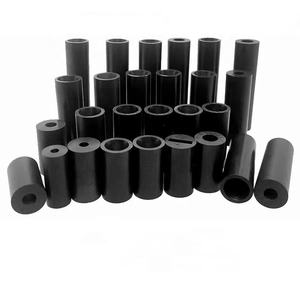
(High Quality Refractory Silicon Carbide SIC Ceramic Plate)
REQUEST A QUOTE
RELATED PRODUCTS
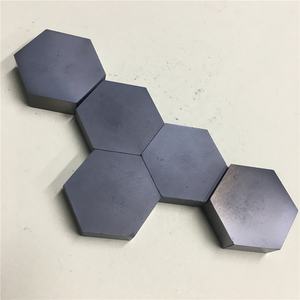
Ceramic Grade Silicon Carbide Powder 1000-5000mesh Black/ Green Silicon Carbide for Grinding
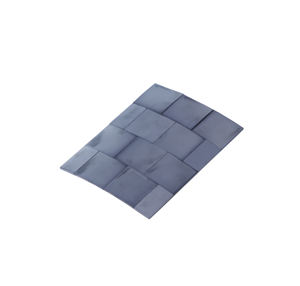
Sic SSic Stationary Silicon Carbide Ceramic Mechanical Seal Ring Premium Product in Seals Category
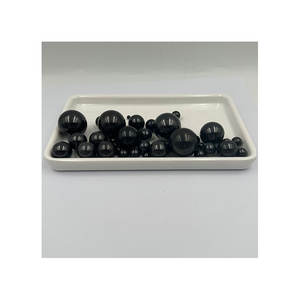
Sisic Dry Seals Silicon Carbide Ceramic Gaskets Seal Ring
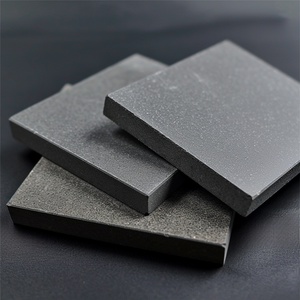
Customized Porous Silicon Carbide Ceramic Filter Tube Sic Pipe
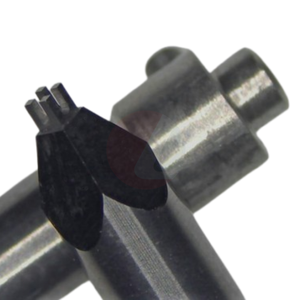
High temperature Silicon Carbide Insulator Ceramic Sheet SiC plate for Chip IC MOS IGBT /Power Module
